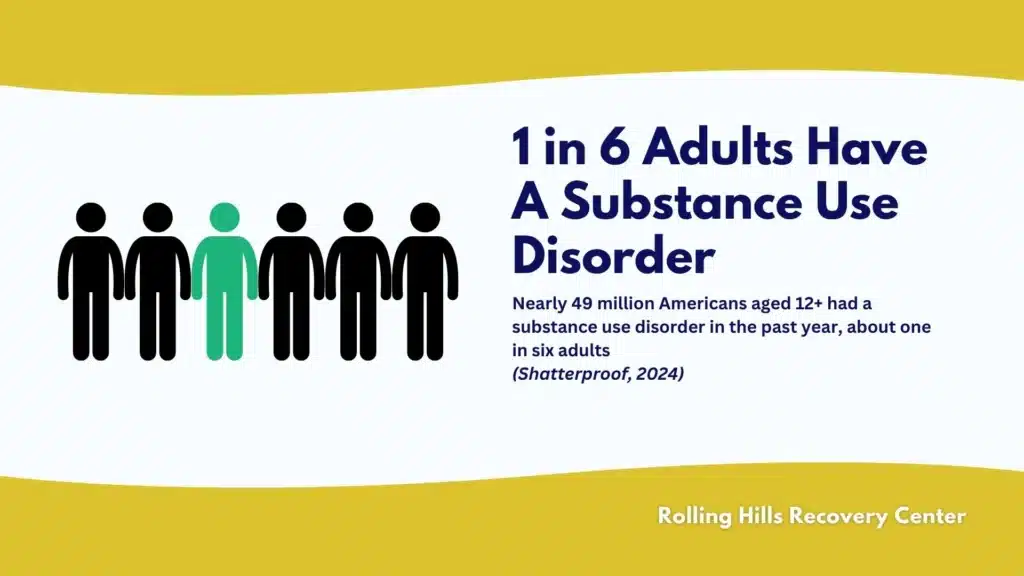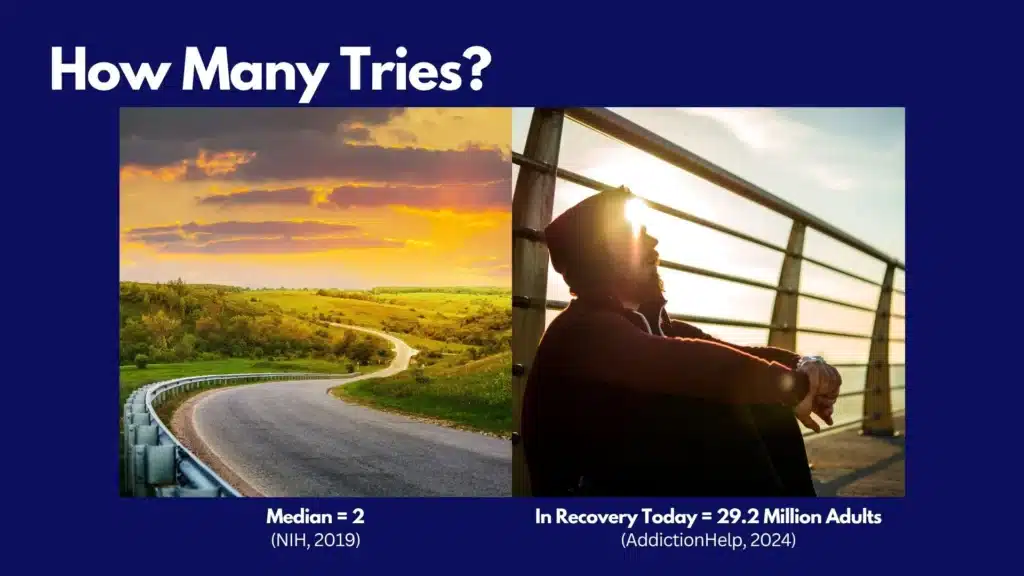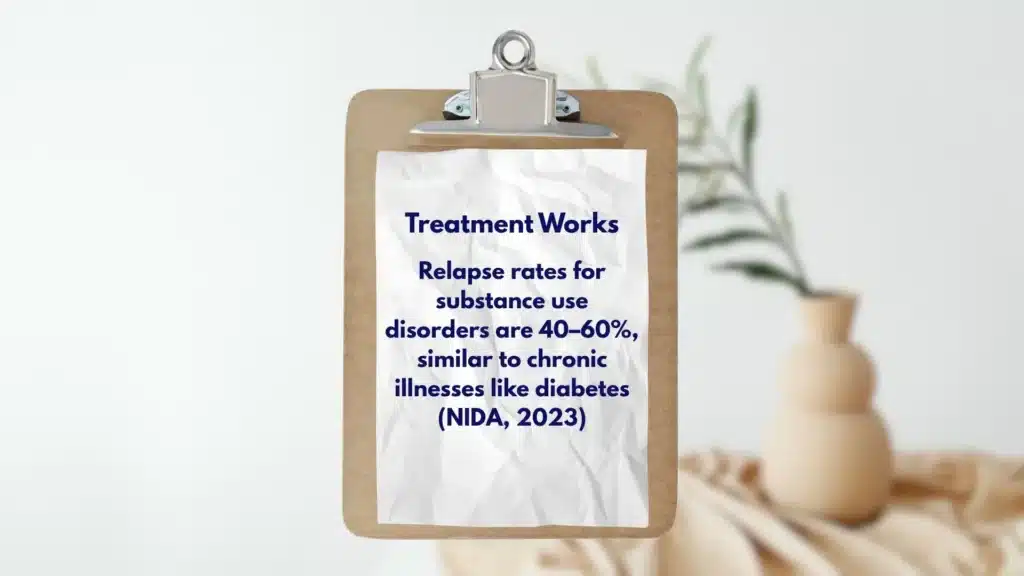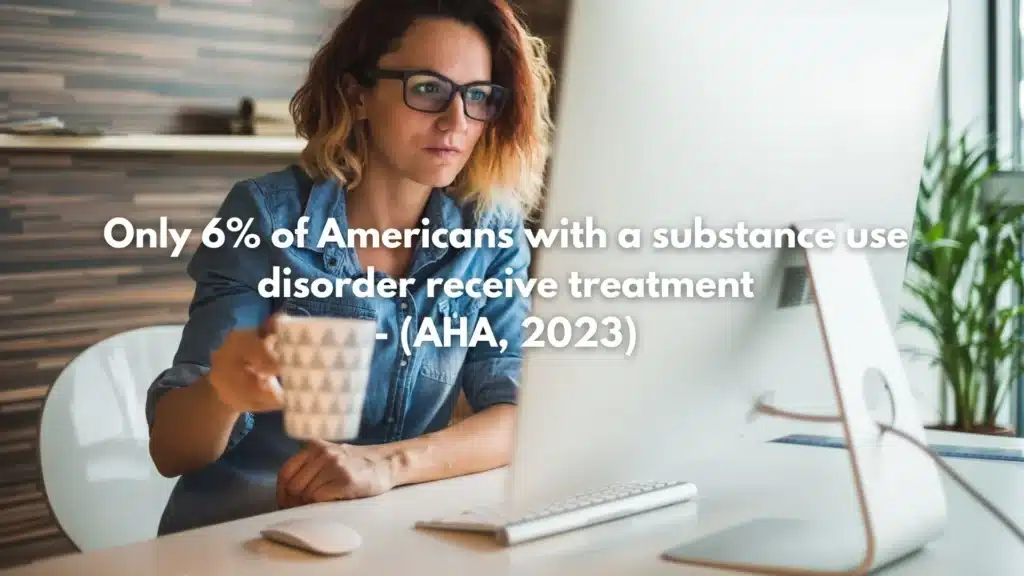Recovery from alcohol or drug use is possible with clear steps, real support, and trusted care. This overview explains what comprehensive treatment looks like in New Jersey, from medical detox to outpatient care, how evidence-based therapies and medication work, and how families can stay involved. Safety, compassion, and long-term stability remain the focus at every stage.

Key Takeaways
- Care should match need: start with a thorough assessment, use ASAM placement to choose medical detox, residential, PHP/IOP, or outpatient. Detox is the start, not the finish.
- Treatments that work pair medications (buprenorphine, methadone, naltrexone) with therapies like CBT, motivational interviewing & contingency management; add family sessions, sleep, nutrition, and exercise for whole‑person health.
- Safe admissions matter: vitals and withdrawal monitoring (CIWA, COWS), medication management, privacy protections, insurance checks, plus help with transportation when needed.
- Plan for aftercare early… relapse‑prevention skills, ongoing MAT, telehealth check‑ins, alumni connections, and support for return to work or school.
Rehabilitation Center for Drug Addicts: Purpose and Who It Helps
What “Rehab” Means in Plain Terms
A rehabilitation center for drug addiction is a medical and behavioral health setting where people stabilize, learn new skills, and rebuild daily life without harmful substance use. It is not a single service. Rehab combines medical care, counseling, skills practice, family support, and follow‑up over time.
In New Jersey, Rolling Hills Recovery Center provides a continuum of care, using evidence‑based treatment alongside practical supports that help people succeed in the real world.
Who Benefits
Care is designed for:
- Individuals using opioids (pain pills, heroin, fentanyl), stimulants (cocaine, meth), benzodiazepines, alcohol, or multiple substances
- People with co‑occurring conditions like anxiety, depression, PTSD, ADHD, and bipolar disorder
- Those who tried to quit on their own and experienced withdrawal or relapse
- Adults needing time away from triggers at home or work; adolescents are evaluated on a case-by-case basis.
- Family members seeking structured involvement and education
If you’re unsure whether someone has drug dependence, addiction, or both, review the differences in this overview: drug dependence vs drug addiction. Understanding this helps match the level of care.
New Jersey Context
New Jersey residents often face fentanyl in the drug supply, high job demands, and commute stress. A NJ‑based program coordinates with local employers, courts, schools, and insurers.
Rolling Hills aligns care plans with state standards set by the Division of Mental Health and Addiction Services (DMHAS) and can assist with transportation, coverage, and safe housing options.
Levels of Care in Plain Terms
Medical Detox (Withdrawal Management)
Detox is short‑term medical care that manages withdrawal safely. It does not “cure” addiction; it prepares someone for ongoing treatment.
What it looks like:
- 24/7 nursing oversight, daily physician or nurse practitioner rounds
- Monitoring with validated tools:
- CIWA‑Ar for alcohol
- COWS for opioids
- Medications to reduce risk and discomfort:
- Alcohol: benzodiazepines, gabapentin, thiamine to prevent Wernicke’s
- Opioids: buprenorphine or methadone; adjuncts like clonidine, anti‑nausea meds
- Benzodiazepines: slow taper, careful vitals, and seizure precautions
- Sleep support, fluids, mild nutrition, and early counseling
Timeframe varies (often 3–7 days), then a warm handoff to inpatient or outpatient rehab.
Residential (Inpatient) Rehabilitation
A structured setting with 24/7 support where someone sleeps on site and follows a daily schedule:
- Individual therapy, group therapy, skills classes
- Medication management and ongoing monitoring
- Practice routines: meals, sleep hygiene, exercise, mindfulness
- Family sessions and weekend planning for home visits when appropriate
Those who prefer a private setting with more amenities may explore a luxury rehab center in NJ option to reduce environmental stress while staying engaged in treatment.
PHP and IOP (Day and Evening Programs)
- Partial Hospitalization Program (PHP): 5–6 hours per day, 5 days per week. Intensive therapy yet the person sleeps at home or in supportive housing.
- Intensive Outpatient Program (IOP): 3–4 sessions per week, 3 hours each. Balances treatment with work or school.
Both include medication management, therapy, case management, recovery skills, and peer support. They’re appropriate after detox or residential, or as an entry point if withdrawal risks are low.
Standard Outpatient and Ongoing Recovery
Weekly individual therapy, medication follow‑ups, and support groups. This level maintains recovery gains and helps prevent relapse while life responsibilities grow.
Core Goals of Treatment

Safe Withdrawal and Stabilization
- Prevent complications like seizures or overdose
- Control symptoms (sweats, tremors, agitation, insomnia, cravings)
- Start or continue medications that lower relapse risk
- Create a simple, written plan for the first 7–14 days at home
Treat Co‑Occurring Mental Health Conditions
Addiction rarely stands alone. Treatment plans include:
- Diagnostic assessment (DSM‑5 criteria)
- Psychiatric evaluation for mood and anxiety disorders, PTSD, and ADHD
- Evidence‑based therapies (CBT, DBT skills, exposure for trauma when appropriate)
- Medication management: SSRIs/SNRIs, non‑addictive sleep supports, ADHD meds when indicated and closely monitored
Return to Daily Function in New Jersey
- A return‑to‑work or return‑to‑school plan
- Fitness for duty letters when appropriate, or graded return schedules
- Coordination with probation or court obligations without breaking confidentiality
- Driving safety counseling; opioid safety agreements; safe pain care
- Linkage to local recovery meetings and community resources
Evidence‑Based Care That Actually Works
Medication‑Assisted Treatment (MAT)
For opioid use disorder, MAT cuts mortality and improves retention. It is standard of care.
- Buprenorphine (Suboxone/Subutex):
- Partial agonist; reduces cravings and withdrawal with lower overdose risk
- Office‑based prescribing: starts after mild withdrawal for smooth induction
- Methadone:
- Full agonist; best for severe cases or those not doing well on buprenorphine
- Daily dosing at specialized clinics with medical monitoring
- Naltrexone (Vivitrol oral or monthly injection):
- Opioid antagonist; requires full detox (7–10+ days opioid‑free)
- Helpful for patients preferring non‑opioid therapy and strong relapse protection
For alcohol use disorder, medications like naltrexone, acamprosate, and disulfiram are chosen based on liver status, goals, and adherence patterns. For stimulants, contingency management and targeted therapies lead, with meds used for symptoms.
If opioids are the main concern, see how care is organized in the state in our latest read: rehab for opioid addiction in NJ.

Therapies That Change Behavior
- Cognitive Behavioral Therapy (CBT): Identify triggers, thoughts, and actions; replace with coping skills
- Motivational Interviewing (MI): Resolve ambivalence; build confidence in change
- Contingency Management (CM): Earn immediate rewards for meeting recovery targets (attendance, negative drug tests)
- Family therapy (including CRAFT): Improve communication, reduce enabling, set healthy boundaries, and support positive reinforcement at home
Trauma‑Informed Practices and Peer Recovery
Clinicians avoid re‑traumatization by ensuring safety, choice, collaboration, trust, and empowerment. Peer recovery specialists who have lived experience provide practical strategies and hope, and help navigate community supports.
Health Basics: Sleep, Nutrition, Exercise
- Sleep: consistent schedule, light exposure in the morning, avoid late caffeine
- Nutrition: regular meals; hydration; consider a multivitamin during early recovery
- Movement: brisk walking or light cardio 20–30 minutes most days
- Complementary options: mindfulness, breathwork, yoga, and, when appropriate, massage, always integrated with medical care
Harm Reduction and Overdose Education
For some, change is not all‑or‑nothing. Harm reduction keeps people alive and moving forward.
- Naloxone on hand for everyone at risk of opioid exposure (person and family)
- Overdose education: recognize slowed breathing, pinpoint pupils, unresponsiveness; call 911; rescue breathing; administer naloxone; stay until help arrives
- Fentanyl risks explained; use of test strips where legal
- Never use alone; avoid mixing opioids with benzodiazepines or alcohol
Admissions and Safety

Step‑by‑Step: From First Call to First Day
- Initial conversation (15–30 minutes)
- Brief screening for substances, withdrawal risks, medical issues, and safety
- Insurance benefits check or self‑pay options explained
- Same‑ or next‑day assessment (telehealth or on-site)
- Biopsychosocial interview, medical history, mental health screening
- Review of medications, allergies, and past treatments
- Lab work as needed
- Urine toxicology to guide care (non‑punitive)
- Basic labs (CBC, CMP), pregnancy test when relevant, EKG for certain meds
- Level‑of‑care decision
- Criteria from ASAM used to match detox, residential, PHP/IOP, or outpatient
- Safety planning
- Naloxone instruction; crisis contacts; means‑safety for medications at home
- Admission logistics
- Transportation coordination (ride share, medical transport)
- Housing coordination if staying away from home
- Packing checklist and medication reconciliation
What to bring (short list):
- Photo ID, insurance card, current medications in original bottles
- Names and contact info for primary care, specialists, and emergency contacts
- Comfortable clothes, simple toiletries, a small notebook
Screening and Risk Tools
- CIWA‑Ar (alcohol) and COWS (opioids) are used routinely
- Clinical Opiate Withdrawal Scale helps time buprenorphine induction
- Suicide and violence risk screens (e.g., Columbia‑Suicide Severity Rating Scale)
- Sleep, pain, and craving scales to tailor care day by day
Medication Management and Privacy
- Physician or advanced practice nurse oversees all meds
- Drug interactions checked; liver and kidney function reviewed
- HIPAA confidentiality observed; only those with your written permission receive updates
- Secure e‑prescribing and electronic health records
Insurance, Transportation, and Access
- In‑network and out‑of‑network benefits are verified quickly
- Prior authorizations handled by the admissions staff
- Transportation help for intake and regular sessions
- Culturally responsive care; language access through bilingual staff and certified interpreters; materials in plain English and other languages common in NJ communities
Family Involvement and Aftercare
Structured Family Sessions
Families often want to help but need a roadmap. Sessions address:
- How to communicate without blame
- Boundaries that protect recovery and safety
- Responding to lapses: when to offer support, when to step back
- Education on medications, triggers, sleep, and stress
A family recovery packet is offered, with simple handouts and crisis phone numbers.
Case management: work, school, and legal
- Return‑to‑work planning with staged hours and safety checks
- School coordination for course load and accommodations
- Coordination with legal counsel or probation officers, information shared only with consent
- Help obtaining ID, access to primary care, dental, or specialty referrals
Relapse Prevention Skills
Relapse prevention starts day one. People learn to:
- Identify high‑risk situations and warning signs
- Build a personal coping menu (urge surfing, delay‑distract‑decide, calling a peer)
- Rehearse refusal skills and scripts: “No thanks, I’m in treatment”
- Create a crisis plan for the first minutes to hours after a trigger
Simple relapse prevention plan template:
- My top 5 triggers:
- Early warning signs I notice in myself:
- Three people I will contact (names and numbers):
- My go‑to coping steps in the first 15 minutes:
- Medications I take and how I keep them safe:
- What I will do if I relapse (non‑judgmental, step‑by‑step):
Continuing MAT, Alumni, and Telehealth
- MAT continues across levels of care; dose adjustments occur as life changes
- Telehealth check‑ins reduce travel and keep momentum
- Alumni groups, peer mentoring, sober activities
- Linkage to mutual‑help options (12‑Step, SMART Recovery, Refuge Recovery) based on preference
- Housing referrals: sober living or supportive housing when needed
Measuring Quality and Safety
Accreditation and Licensure
Quality programs in New Jersey maintain:
- Accreditation from The Joint Commission or CARF, showing adherence to national standards
- NJ DMHAS licensure, confirming compliance with state rules for staffing, safety, and services
- Up‑to‑date policies for infection control, medication safety, and emergency response
Staff Credentials and Supervision
Expect a multidisciplinary team:
- Physicians (MD/DO) or advanced practice providers with addiction experience
- Addiction psychiatrists or psychiatrically trained prescribers for co‑occurring care
- Licensed therapists (LCSW, LPC, LMFT), certified alcohol and drug counselors (CADC/LCADC)
- Nurses (RN/LPN) with withdrawal management skills
- Peer recovery specialists supervised and integrated into the care team
- Regular case reviews and data‑driven quality improvement
Outcomes That Matter
Data should be transparent and clinically meaningful:
- Retention in care (e.g., 30‑, 60‑, 90‑day engagement)
- Reduction in substance use or sustained abstinence; negative toxicology where appropriate
- Quality‑of‑life measures: sleep, mood, employment/school status, social connection
- Safety events: overdoses, falls, medication errors, tracked and addressed
- Timely initiation of MAT for opioid use disorder
Patient Rights and Ethical Pain Management
- Clear statement of patient rights and grievance procedures
- Informed consent for all treatments; shared decision‑making
- HIPAA‑compliant privacy; access to records on request
- Ethical pain care: multimodal pain strategies, non‑opioid first approaches; when opioids are used, set goals, monitor closely, coordinate with MAT if applicable
- Medical oversight for any controlled medications; prescription drug monitoring program checks
Quality checklist to ask a rehab:
- Are you accredited (The Joint Commission or CARF) and licensed by NJ DMHAS?
- Do you offer MAT on-site for opioid and alcohol use disorders?
- How do you coordinate psychiatric care for co‑occurring conditions?
- What is your plan for aftercare, and how early does discharge planning start?
- How do you measure and report outcomes, including safety events?
- How will my privacy be protected, and who can receive updates?
Practical How‑To: Starting Today in New Jersey
1) Check Safety First
- If there are signs of alcohol withdrawal (confusion, shaking, seizures), benzodiazepine dependence, or high‑risk opioid use, seek medical evaluation immediately or call 911
- Ensure naloxone is available at home; teach family how to use it
2) Call Admissions
- Have this information ready:
- Substances used (what, how much, how often), last use
- Any history of seizures, hallucinations, delirium tremens, heart or lung disease
- Current medications and allergies
- Insurance card photos (front and back)
- Ask about same‑day or next‑day assessment and transportation
3) Prepare for Detox or First Session
- Set up automatic bill pay and out‑of‑office messages if entering residential or PHP
- Arrange childcare or pet care for the first week
- Decide on a phone and visitor plan that supports recovery
- Secure medications at home; dispose of unused opioids per pharmacy guidance
4) Start MAT When Indicated
- For opioids, discuss buprenorphine induction timing; avoid taking opioids before the appointment
- For alcohol, do not stop suddenly without a plan; taper or supervised detox may be safer
- Bring your medication list and any pill bottles to admissions
5) Put Aftercare on the Calendar Now
- Book early follow‑ups for therapy and MAT within 7 days of discharge
- Save crisis numbers and set “check‑in” reminders on your phone
- Identify three local meetings or groups you are open to trying
Rolling Hills Recovery Center’s Approach in Brief
- Evidence‑based: MAT for opioid and alcohol use disorders, CBT, MI, contingency management, family therapy, trauma‑informed care
- Holistic supports: sleep coaching, nutrition, fitness, mindfulness, integrated with medical treatment
- Safety and privacy: expert oversight, HIPAA confidentiality, naloxone education, rigorous medication management
- Accessibility: benefits checks, transportation help, and cultural humility in care planning
- Outcomes focus: retention, reduced use, quality‑of‑life gains, and prevention of safety events
Tools and Templates You Can Use
- 48‑hour stabilization plan (early recovery)
- Sleep at consistent times; limit naps to 30 minutes
- Hydrate; eat three simple meals and a snack
- Move for 20 minutes daily (walks count)
- Attend one group or peer meeting; text a peer daily
- Keep naloxone visible and teach one person how to use it
- Medication and appointment tracker (simple)
- Daily meds with checkboxes
- Weekly therapy, MAT, and lab appointments with dates/time
- Space for side effects and questions to ask your provider
- Trigger and coping card (wallet size)
- Top three triggers
- Three coping steps (e.g., 4‑7‑8 breathing, leave the situation, call support)
- One reason you’re doing this now
- Family support checklist
- Remove unsecured opioids and sedatives from home
- Learn how to use naloxone; place it where all can find it
- Agree on a “code phrase” for tough moments that means: pause & support
- Attend one family session or education class this week
Useful References for Readers
- SAMHSA National Helpline (24/7, confidential): https://www.samhsa.gov/find-help/national-helpline
- NIDA: Principles of Drug Addiction Treatment, research‑based: https://nida.nih.gov/sites/default/files/podat-3rdEd-508.pdf
- CDC Opioid Overdose Prevention: https://www.cdc.gov/overdose-prevention/prevention/
- ASAM Criteria (level‑of‑care framework): https://www.asam.org/asam-criteria

Conclusion
Recovery works best with clear steps: safe detox, structured therapy & meds, and steady aftercare. Key takeaways include evidence-based care, family involvement, and matching the level of care to clinical need. If ready, verify benefits, schedule an assessment, or ask questions… today.
Frequently Asked Questions (FAQs)
What Does a Rehabilitation Center for Drug Addicts Do Day to Day in New Jersey?
A rehab center completes a thorough intake, runs a medical and mental health screening, and matches each person to the right level of care using accepted standards (like the ASAM criteria).
Typical days include physician oversight, nursing check‑ins, group and individual therapy, medication management, and family contact when appropriate.
Safety steps, vital signs, withdrawal monitoring, overdose education, and privacy protections run in the background. Care usually starts more intensive, then steps down to outpatient so life can restart.
How Does a Rehabilitation Center for Drug Addicts Handle Medical Detox and Withdrawal?
Detox is medically supervised because alcohol, benzodiazepine, and opioid withdrawal can be risky.
In a rehabilitation center, clinicians assess past use, medical history, and current symptoms, then use tools like CIWA or COWS to track progress.
Comfort medications, hydration, sleep support, and 24/7 nursing keep symptoms managed; medications for opioid use disorder (e.g., buprenorphine or methadone) or alcohol use disorder (naltrexone, acamprosate) may be started when indicated.
Detox is the first step, not the finish; therapy and relapse‑prevention planning follow right away.
Which Treatments Work Best at a Rehab Center for Drug Addicts?
Evidence shows the best results come from combining medication and therapy. In a rehabilitation center for drug addicts, common options include:
• Medications for addiction treatment (MOUD/MAT) paired with counseling
• Cognitive behavioral therapy, motivational interviewing, and contingency management
• Trauma‑informed care, family therapy, and skills for sleep, stress, and nutrition. Digital supports and recovery apps can help between sessions; peer recovery and alumni check‑ins add accountability. No single plan fits everyone; treatment is personalized and adjusted as people heal, mind & body.
How Long Does Treatment at a Rehabilitation Center for Drug Addicts Take?
Time varies. In a rehabilitation center for drug addicts, medical detox may last 3–7 days, residential care 2–4 weeks, and step‑down programs (PHP/IOP) from a few weeks to several months.
Outpatient and medication follow‑up can continue longer for stability. The pace depends on health needs, safety, cravings, mental health, housing, and work or school demands.
Short answer, long enough to be safe and effective, then tapered so recovery fits real life.
Author
-
Our editorial team includes licensed clinicians and board-certified addiction specialists. Every article is written and reviewed to be clear, accurate, and rooted in real treatment experience.
View all posts -
Dr. Williams has held senior leadership positions in the behavioral health field for over 30 years. He has worked with diverse populations in various private and public sectors.
View all posts












